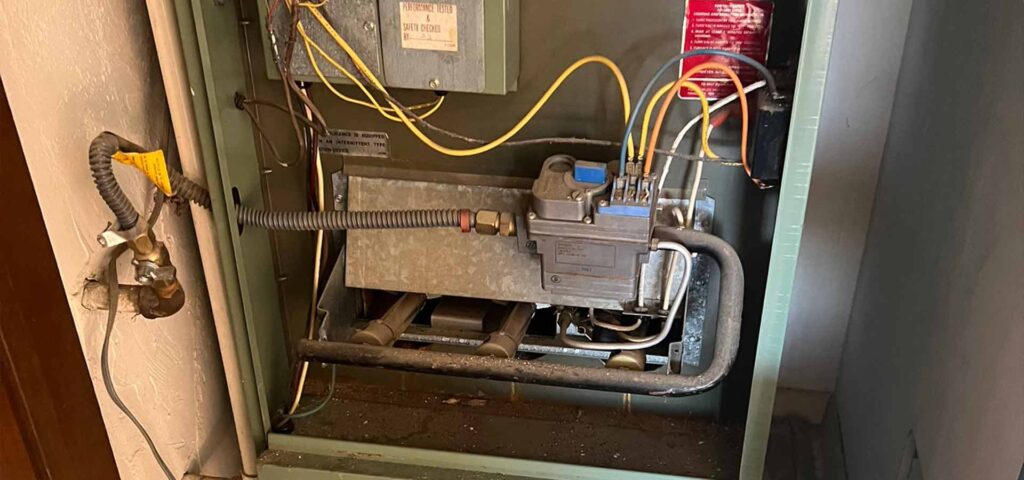Over time, your home’s furnace may start showing signs of trouble that indicate it needs repair. Unusual noises, inconsistent heating, or an unexpected rise in energy costs are often signs that something’s wrong and it’s time for professional furnace repair. These symptoms signal potential issues with your furnace’s heat exchanger, like cracks, blockages, or corrosion. Here are some factors that affect the cost of heat exchanger repairs:
Type of Heat Exchanger
Shell and tube exchangers require more advanced repairs than plate heat exchangers because of their design and larger surface area. Construction materials affect costs, with stainless steel units requiring higher repair prices. Industrial heat exchangers with unique designs may come with higher repair costs due to their unusual configurations.
Repair technicians factor in the exchanger type when assessing work requirements and providing cost estimates. The composition of the heat exchanger design can impact the time needed for repairs. If the technician must use specialized tools or equipment, it may increase the total cost. Identifying your heat exchanger type helps you anticipate potential repair expenses.
Extent of Damage
The severity of the exchanger’s damage correlates directly with repair costs. Technicians can address small leaks or loose fittings quickly and at lower costs. Extensive corrosion or cracked tubes can lead to higher repair bills. Severe damage might make repairs impractical or impossible, leading to a part replacement.
Technicians assess the location and extent of damage to advise whether repair or replacement will be more cost-effective. The location of the damage within the heat exchanger affects the difficulty and cost of repairs. If the repair team discovers multiple issues during the inspection, your price estimate could increase. Early detection of problems through regular maintenance services minimizes the extent of damage and associated repair costs.
Age of the System
Older heat exchangers may be more expensive to repair than their newer counterparts. This is because it can be difficult to obtain spare parts for outdated models. Older exchangers are more prone to damage as they are exposed to weather elements and wear and tear over time. The preservation of older systems could be unprofitable in some cases, so your repair team may recommend upgrading your furnace for easier maintenance.
The age of the HVAC system affects its energy consumption and operating costs, making an upgrade a more cost-effective solution. Older systems could require additional integration with contemporary control systems to make them more functional. Understanding how old your heating unit is helps you decide whether to fix the heat exchanger issue or invest in a new furnace.
Brand and Model
Some manufacturers design units with accessible spare parts to simplify repairs. Other dealers use proprietary parts, which relatively cost more due to their scarcity. High-quality furnace and replacement part brands have long-term reliability.
A furnace brand’s reputation can influence the accessibility of qualified service technicians. Some models may be recalled or known to have recurring problems, affecting the frequency and cost of your furnace repair. Finding more information about the brand and model of your furnace and its heat exchanger could inform you of future furnace repair requirements.
Labor Costs
Labor expenses comprise a significant portion of heat exchanger repair costs. Prices differ depending on your geographic location and the difficulty of the repair. Complex tasks that require more time and skill will lead to higher labor fees. Factor in technicians’ specialties and their quoted prices when evaluating repair options. Skilled technicians might charge more, as their prices are driven by years of practice and efficiency in fixing furnaces.
Estimates for labor costs may include travel time, especially for remote locations. Some repairs might require multiple technicians, increasing labor expenses. Transparent pricing and detailed estimates can help you understand the labor cost component of heat exchanger repairs.
Replacement Parts
The cost of the replacement part and its source significantly contribute to the total repair expense. Original equipment manufacturer parts are sometimes more expensive, contributing to high replacement costs. Aftermarket parts may cost less than the originals, but your technician should confirm that they adhere to the exact quality requirements of the original parts. If multiple parts are needed for the exchanger repair or replacement, your estimate may be higher.
Find High-Quality Furnace Repair Services
Routine furnace checks and minor repairs contribute to system longevity. Clean or replace your filters and clear debris away from your heating system to promote optimal function between services. If you notice unusual noises, smells, uneven heating, or other issues, hire a reputable repair team. Contact a furnace repair service today to schedule a maintenance appointment for your heating system.






